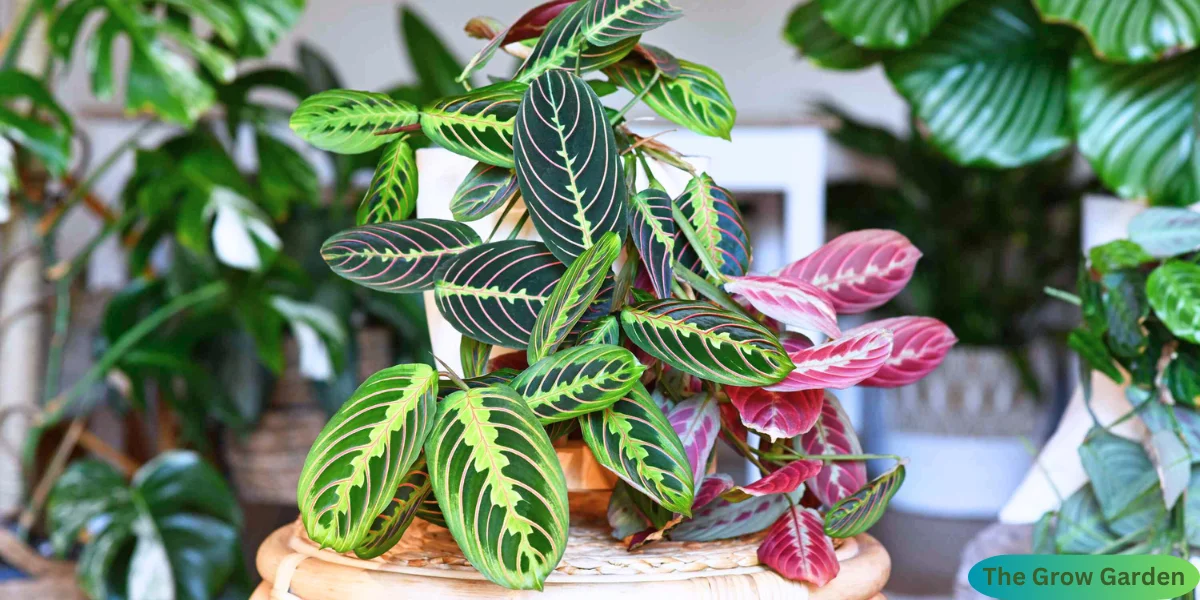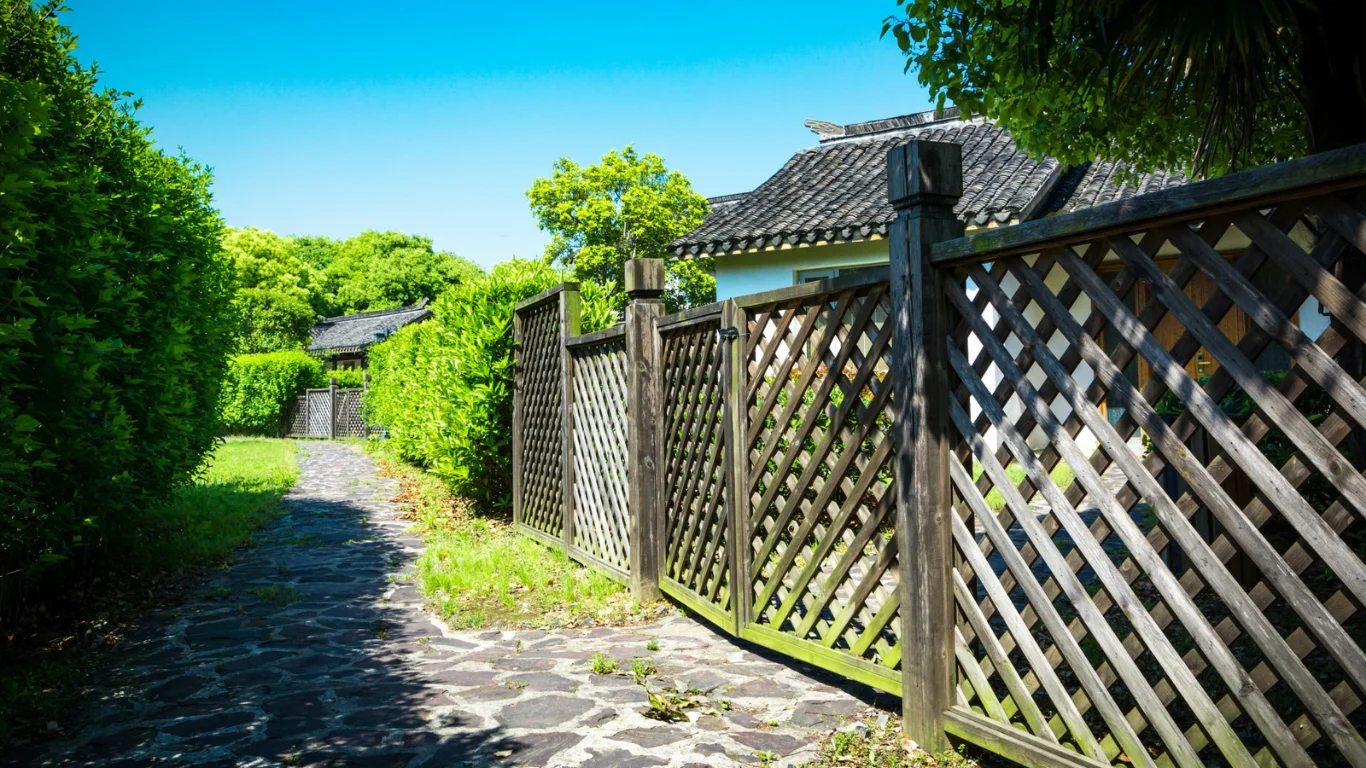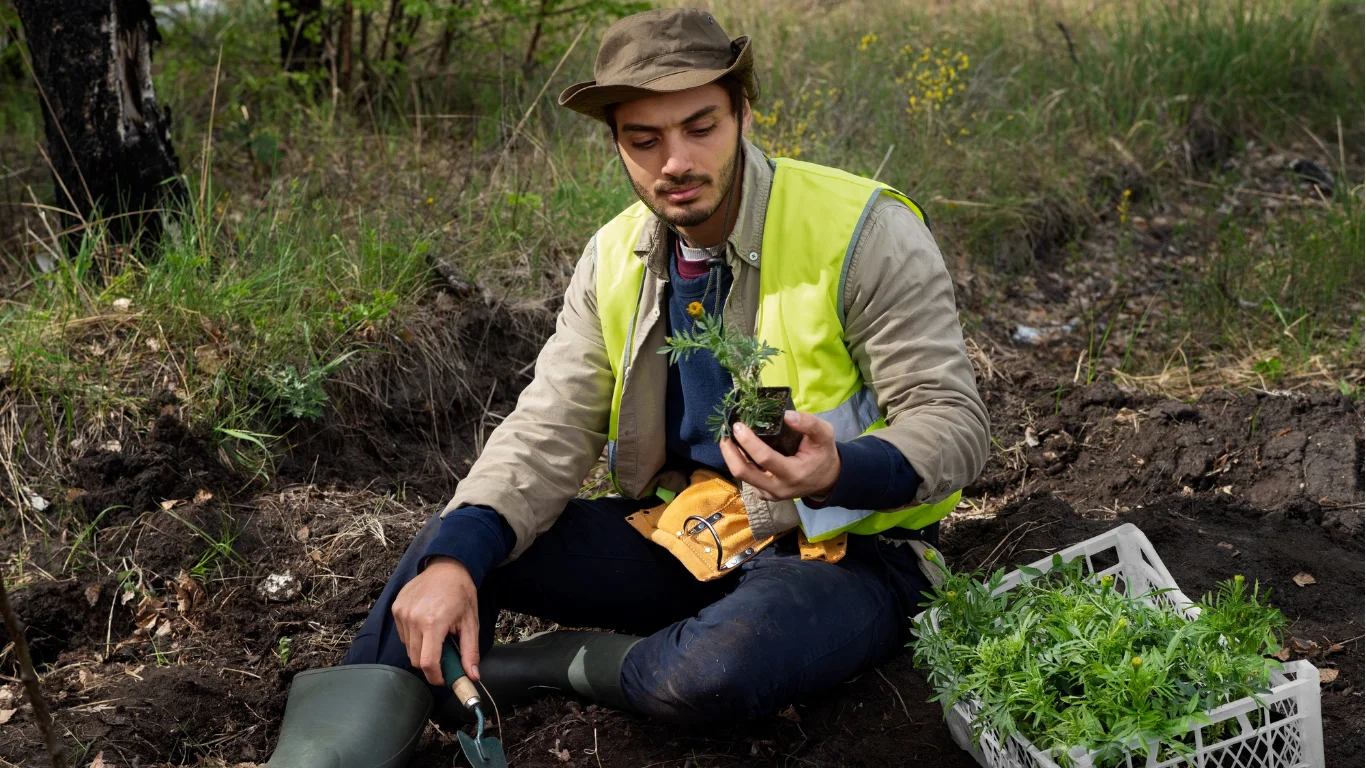Our guide provides detailed tips on growing, caring, types, propagation & pruning, troubleshooting common problems, and enhancing home aesthetics with prayer plants, native to Central and South America’s rainforests, known for their beautiful leaves and prayer-like folding at night.
Plant Overview
Stunning and beautiful prayer plants, they are famous and popular for their unique behavior. They are highly visible and attractive houseplants that help to enhance any interior space. Prayer leaves are so named because of their peculiarity and the leaves turn up at night. As we raise our hands in prayer, they shine like a charming vision by day and merge at night.
Today we are going to give you a guide on top different types of praying plants, how to grow them, their benefits and virtues and essential aspects of care. Surely you will be interested in growing prayer plants and reading about their top varieties and benefits.
Specifications
| Common Name: | Prayer plant |
| Botanical Name: | Maranta leuconeura |
| Spread: | 12-15 inches |
| Sun Exposure: | Low light, shade |
| Family: | Marantaceae |
| Plant Type: | Herbaceous, perennial |
| Soil Required: | Well-drained, moist |
| Hardiness Zones: | 11-12 (USDA) |
| Soil pH: | Neutral, acidic |
| Bloom Time: | Spring |
| Flower Color: | White |
| When to plant: | Spring |
| Native Area: | South America |
What are Prayer Plants
The prayer plant’s name comes from its distinctive evening folding habit, nyctinasty, which is a light-sensitive movement resembling hands in prayer. During the day, the leaves lay flat to capture sunlight, and at night, they raise up as though in a gesture of worship. This mesmerizing movement makes prayer plants fascinating for plant enthusiasts.
Do you know why is it called a Prayer Plant
The prayer plant’s name comes from its evening leaf folding, a natural response to light levels, temperature, and humidity. This evolutionary adaptation, known as nyctinasty, protects the leaves from harsh environmental conditions and maximizes sunlight exposure during the day.
Prayer Plants Features
The prayer plant is a low, spreading indoor plant that is simple to develop and has amusing foliage. It is a gradual grower, appropriate for placing baskets or tabletops. The plant’s name comes from its folding leaves at night time, similar to praying palms. Variegated foliage provides hobby to the plant. Although it produces flowers, they may be no longer big or showy. The prayer plant is a great houseplant for its leaves.
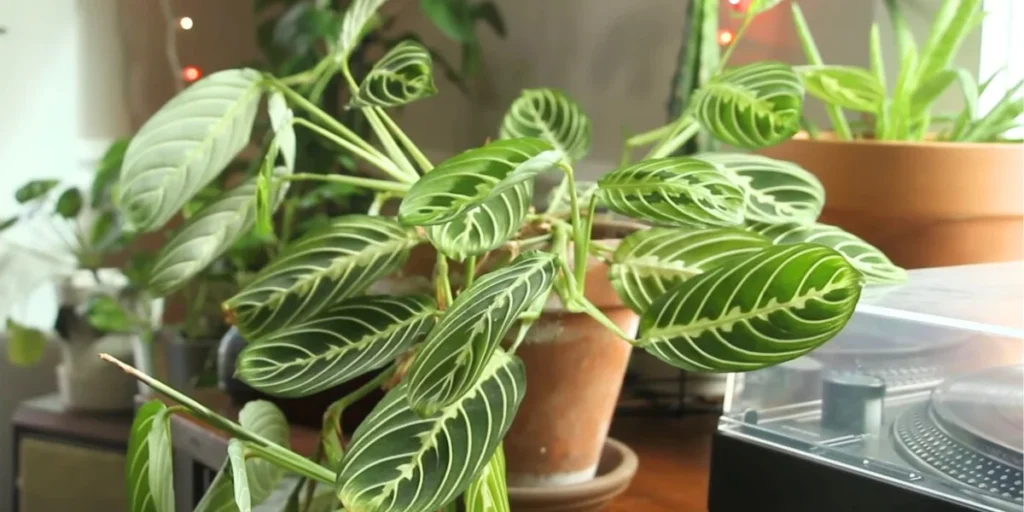
Origin And Natural Habitat
Prayer plants are native to the tropical rainforests of Central and South America, particularly in Brazil. In the wild, they develop under the shade of bigger plants and trees, partaking in the dappled daylight that channels through. These plants flourish in moist conditions, making them impeccably fit to indoor developing when their mugginess needs are met.
Symbolic Significance
In addition to their visual appeal, prayer plants hold symbolic significance in various cultures. The act of their leaves folding together at night can symbolize gratitude, spiritual connection, and inner peace. They are often gifted to symbolize devotion, balance, or harmony in relationships, making them popular gifts for loved ones.
Best Tips For Prayer Plant
- Location your prayer plant in a gap that gets vibrant to medium indirect light. An excessive amount of light will scorch the leaves.
- These may be complicated to water. Provide your prayer plant a great watering a few times per week at some point of the spring and summer, and as soon as every week for the duration of the autumn and wintry weather.
- This Plant loves well-draining, loamy and acidic soil for best growth.
Common Prayer plants:
- Calathea ‘Makoyana’
- Maranta leuconeura ‘Lemon Lime’
- Ctenanthe ‘Burle Marx’
- Maranta leuconeura kerchoveana
- Stromanthe ‘Magic Star’
- Calathea ‘Compact Star’
- Calathea ‘Beauty Star’
- Calathea ‘Freddie’
- Calathea ‘Medallion’
- Calathea ‘Dottie’
- Calathea ‘Warscewiczii’
- Calathea ‘Ornata’
- Calathea ‘White Fusion’
- Stromanthe ‘TrioStar’
How to Grow and Care
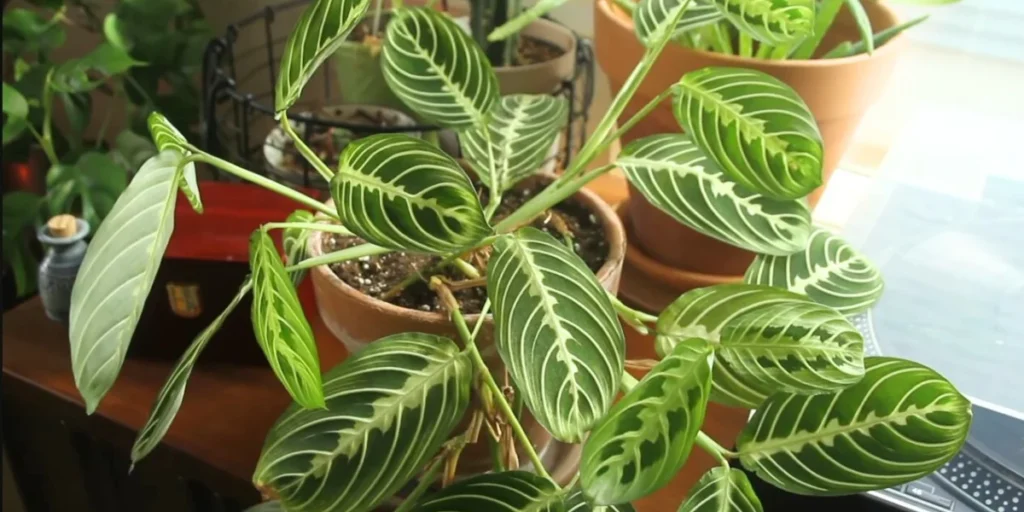
Choosing The Right Environment
Prayer plants, it is very important to choose the right environment, because these plants always grow characteristically in the place where their ancestors moved to tropical habitats. We outline some key points that you can read with peace of mind and some useful tips to make this process a success in theory.
Mild Conditions
You should monitor your plant’s movement in the light best. If you see or feel that the leaves are losing their original color or changing, then you should understand that the direct sunlight is getting too much, so you should try to give it light as needed because In the case of too much light, the leaves often turn yellow and burn, or in addition, they will dig out the existence of color, which will not make their color bright.
But if you also feel that the growth of the plant has slowed down, then you should understand that the light is getting too little, so you need to monitor your plant to take care of it with a bright suggestion. May your plant grow to full success.
Light
Prayer plants prefer bright, indirect sunlight. If you give them direct light, it can burn their leaves, but if you give them too little light, it is also dangerous for their growth. Can stop Light should be selected according to this one requirement so that the plants grow successfully.
Temperature
Considering the ideal temperature, it is from 65°F to 80°F. They are very sensitive to cold drafts, so in winter they should be kept away from windows, doors and shaded areas in a suitable place. What should be done?
Humidity
Moisture is very important and beneficial for the health of prayer plants. You can increase the humidity as needed by having a humidifier.
Soil Requirements
A container should be used that retains moisture without getting wet. Be sure to use potting soil and perlite, as well as potting mix that works best. With this method you can illuminate the prayer plants by placing four moons.
Use Of water
Prayer plants are always watered when the soil looks dry, according to the above amount, i.e. one inch. These plants always prefer moist soil to thrive and grow. But remember once never keep them in water all the time as it loses their strength and rots. Therefore, after giving water, do not water until the soil dries up to an inch above them. When the soil dries up to an inch, then water as needed at that time so that their health remains optimal. And grow it in a bright way.
Fertilization
For the growth of the plant it is necessary that they should be given liquid fertilizer once in a month. In cold and hot weather, the growth of the plant often slows down, at that time their food should be reduced.
Repotting Tips
When the prayer plants outgrow their container, replant them after 1-2 years. If you want to water more, use a larger pot than the current pot. Use insecticides or soaps around the plants to promote growth.
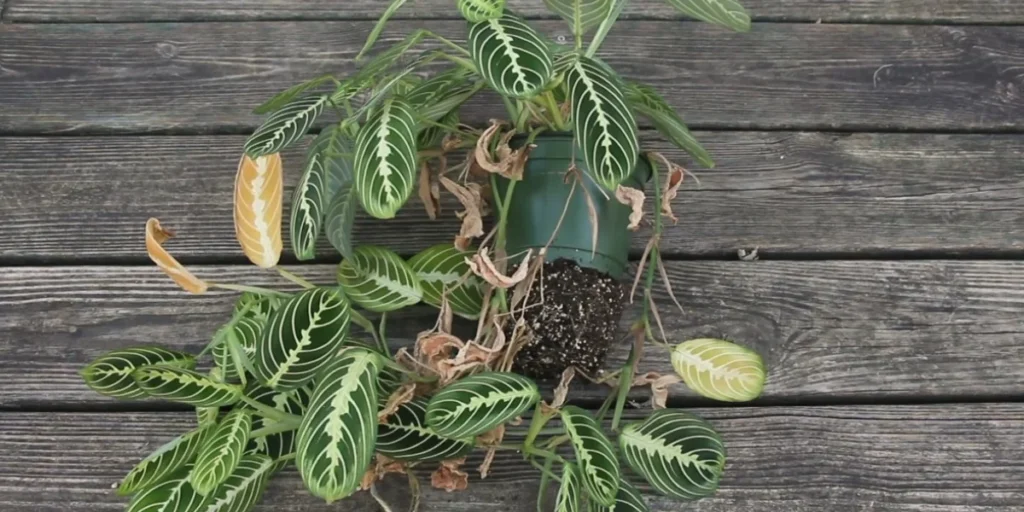
Gently remove the prayer plant from its current pot, taking care not to damage the roots.
How To Repot
- Inspect the root system and trim away any dead or rotting roots.
- Choose a new pot that is 1-2 inches larger in diameter than the old one.
- Fill the new pot with fresh, well-draining soil and place the plant in the center. Fill in around the roots, pressing the soil lightly to secure the plant.
- Water thoroughly to help the plant settle into its new pot.
People also read about Philodendron Florida Ghost
Watering Techniques
Watering is one of the most basic parts of really focusing on Prayer plant. These plants appreciate reliably clammy soil, yet not saturated or waterlogged circumstances. This is the way to appropriately water them:
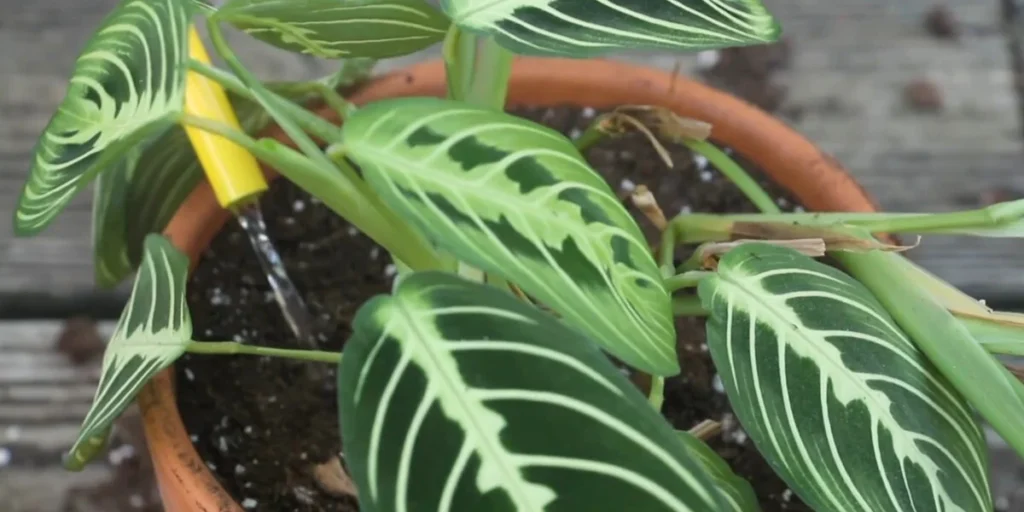
How Often To Water
During the developing season (spring and summer), prayer plants require normal watering. Permit the top inch of the dirt to dry out between watering. Utilize your finger to check the dirt dampness and possibly water when the dirt feels dry. In the fall and winter, lessen the watering recurrence, as the plant’s development dials back during these cooler months.
What Type Of Water To Use
Praying plants are sensitive to synthetics in regular water, so it’s best to use refined water or let faucet water sit for 24 hours to dissipate harmful chemicals. Utilizing separated water can likewise forestall mineral development in the dirt.
Signs Due To Water Problems
- Overwatering: At the off threat that the plant’s leaves come to be yellow and the dust feels reliably moist, this can be an illustration of overwatering. The roots might begin to spoil on the off chance that water isn’t depleting as expected.
- Underwatering: Dry, fresh leaves or caramelizing tips can demonstrate underwatering. Guarantee the plant is getting sufficient dampness, particularly during the hotter months when it’s effectively developing.
Fertilizers Need
Treating your prayer plant is fundamental for advancing sound development and energetic foliage. Nonetheless, over-treating can actually hurt more than great.
Fertilizing Schedule
During the developing season, fertilized prayer plants establish each 2-4 weeks utilizing a reasonable, water-dissolvable houseplant manure. Continuously weaken the manure to around 50% of the prescribed solidarity to stay away from synthetic development in the dirt.
Fertilizers Used
Choose an even compost with a suitable nitrogen, phosphorus, and potassium blend, or natural composts like fish emulsion or fluid kelp. Avoid treating during colder months as the plant is in its lethargic stage.
People also visit to care for Delphiniums
Pruning Tips
Maintaining prayer plants involves proper pruning and grooming to ensure their appearance is at its best.
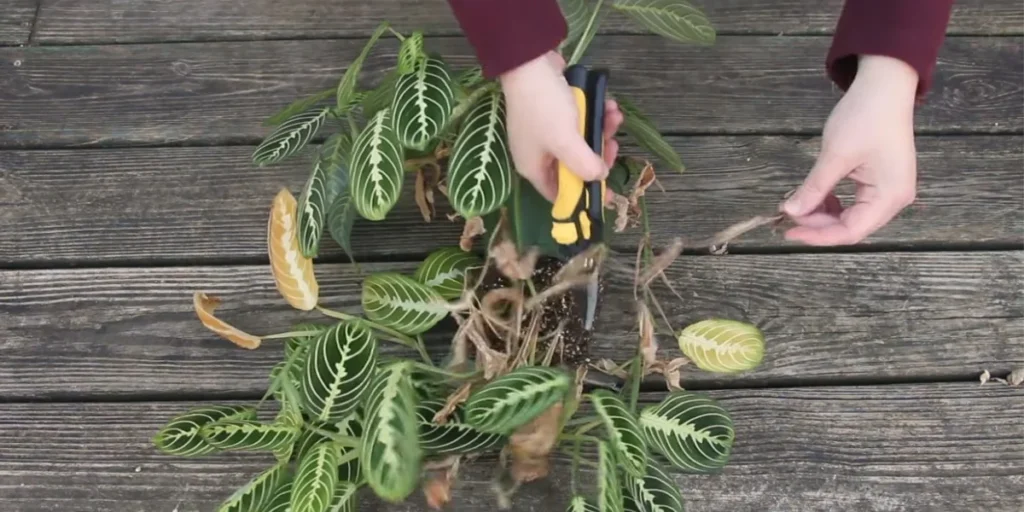
Do You Know How To Prune Prayer Plant
Prayer plants don’t need much pruning, but removing dead, yellowing, or damaged leaves during the growing season can encourage new growth and avoid stress.
How to Prune
Use clean, sharp scissors or pruning shears to trim damaged leaves, sanitize tools before and after pruning, and trim back healthy stems for a fuller plant shape.
Propagation
Prayer plants can be propagated through division or stem cuttings. Here’s how to propagate your prayer plant at home:
Propagation By Division
- Remove the plant from its pot and gently separate the root ball into sections with at least a few healthy stems and roots.
- Repot each section in its own pot with fresh soil.
- To ensure the successful establishment of new plants, ensure they are watered well and kept in a warm, humid environment.
Propagation By Stem Cuttings
- Using clean scissors, cut a healthy stem just below a node.
- Place the cutting in water or moist soil and keep it in a warm, well-lit location.
- After a few weeks, roots should begin to develop. Once the roots are a few inches long, you can transplant the cutting into its own pot.
Problems & Solutions for Prayer Plants
Yellowing leaves
Yellowing leaves may indicate overwatering, underwatering, vitamin deficiency, or poor drainage. To address this issue, follow these steps: analyze the problem, address the root cause, and treat the affected leaves.
Solution:
- Assess soil moisture levels; if too moist, allow it to dry before watering, and if too dry, increase the frequency of plant watering.
- Ensure the pot has proper drainage and the plant is not soaking in water.
- If you suspect nutrient deficiencies, it’s advisable to use a balanced fertilizer to ensure the health of your plant.
Browning Leaves
Brown colored tips or edges on the leaves are much of the time an indication of low moistness or conflicting watering. Earthy leaves can be created through the accumulation of salts and minerals from tap water or over-preparation.
Solution:
- Increase humidity levels around your plant by misting it or using a humidifier.
- Use filtered or distilled water to prevent the buildup of harmful chemicals in the soil.
- Be cautious with fertilization, and flush the soil periodically to remove excess salts.
Leaves Curling
Curling leaves are much of the time a sign that your requested plant isn’t getting sufficient water or mugginess. Petitioning heaven plants love dampness, and when they don’t get enough, they answer by twisting their passes on to preserve it. Now and again, twisting leaves can likewise demonstrate that the plant is presented to an excess of direct daylight.
Solution:
- Ensure that you are watering your plant regularly and that the soil is consistently moist.
- Increase humidity by misting the plant, placing it on a humidity tray, or using a humidifier.
- Move the plant to a location with indirect light.
Common Pests And Their Solution
Spider mites, aphids and mealybugs are most common pests or insects that can damage prayer plants. Protect your plants from pests like these. Every possible and regular checking of the plant should be done when signs or symptoms of infection are noticed. If insects are found, never use sprays to kill them as this will burn the plants. That’s why you should always use neem oil or insecticidal soap on detecting these insects so that only the insects will be killed and the growth of the plant will continue.
Prayer Plant At Night
Prayer plants exhibit unique nightly leaf folding, a natural circadian rhythm, indicating health and reopening in the morning to catch light.
Toxicity
Prayer plants are well known because of their non-poisonous nature for felines and canines, making them appropriate for pet people who need to appreciate houseplants without stressing over their fuzzy companions snacking on the leaves. Notwithstanding, deterring biting on plants for stomach related upset is significant.
Prayer Plant Toxic To Cats: Is It Safe?
Many people ask, “Are prayer plants toxic to cats?” The answer is no. Maranta leuconeura and other prayer plant varieties are considered safe for both cats and dogs, making them a great option for pet-friendly households. You can place them around your home without concern that they will harm your pets.
Can i put my Prayer Plant on my Lanai?
A lanai is an outside porch or veranda, commonly tracked down in warm environments. On the off chance that you live in a subtropical or tropical district, you can put your request plant on your lanai, given that it is shielded from direct daylight and brutal weather patterns.
- Choose a spot with filtered or indirect sunlight.
- Protect the plant from strong winds, rain, and temperature fluctuations.
- Bring the plant indoors if nighttime temperatures drop below 60°F (16°C).
Setting your prayer plant outside can be gainful during warm months, as it will flourish in the normal moistness and wind current. Nonetheless, be aware of bugs that might find their direction to the plant when it’s outside.
People also read about Philodendron White Wizard
Prayer Plant Using As A Decorative
Prayer plants are adaptable and can be utilized as enlivening pieces in your home style. They can be put inside on tables, shelves, or plant stands, or utilized as proclamation pieces in family rooms or entrances. To make a multi-layered show, consolidate different plant assortments, pot sizes, and varieties to supplement their foliage. Pair them with stylish planters for a modern touch. Overall, prayer plants offer a unique and visually appealing addition to any home.
Useful Benefits
- Ideal for beautiful, balanced color.
- Safe for pet parents.
- Requires weekly watering.
- Suitable for bright to medium indirect sunlight spots.
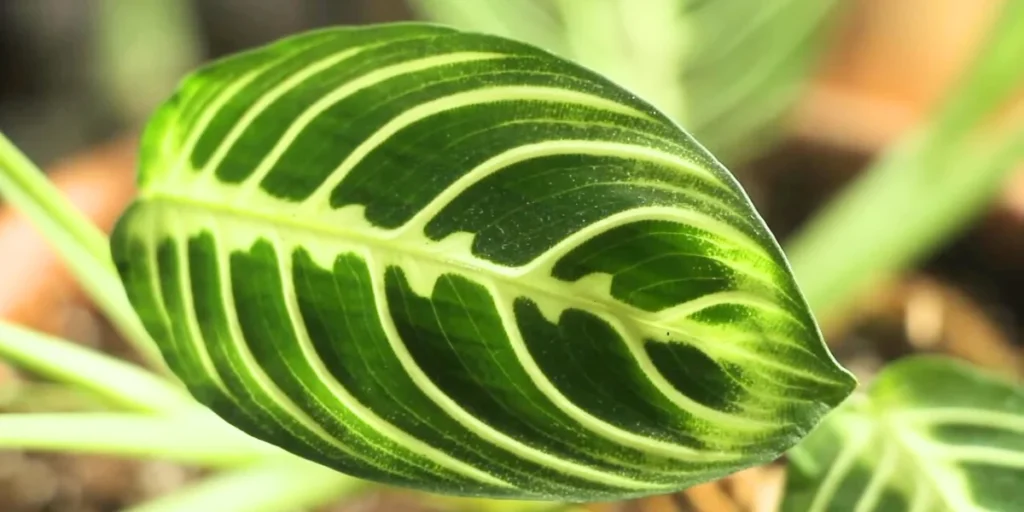
Keeping The Air Clean:
Like many houseplants, these prayer plants absorb incoming toxins and release oxygen to purify the healthy environment, which is one of the best benefits.
Mood Boost:
A corner of an indoor plant is a nod to better and helps to reduce stress. With greenery and bright colors, they create a lush environment. By this the well-being is best enhanced. They are also called respiration because they provide oxygen.
Aesthetic Appeal:
Prayer plants have intricate patterns and vibrant colors as a striking plant. Which generally makes them the best decorative plants for offices and homes.
Being Low Maintenance:
Prayer plants are easier to care for than other plants. That gives them the love and enthusiasm of experienced plants. Their forgiving nature allows them to make minor maintenance mistakes without serious consequences, making them easy to care for.
Types Of Prayer Plant
Prayer plants are liked for their colorful, patterned leaves, which range significantly relying on the type. Following are a number of the maximum famous varieties of prayer plants which might be typically cultivated indoors.
1. Maranta Leuconeura (Red Prayer Plant)
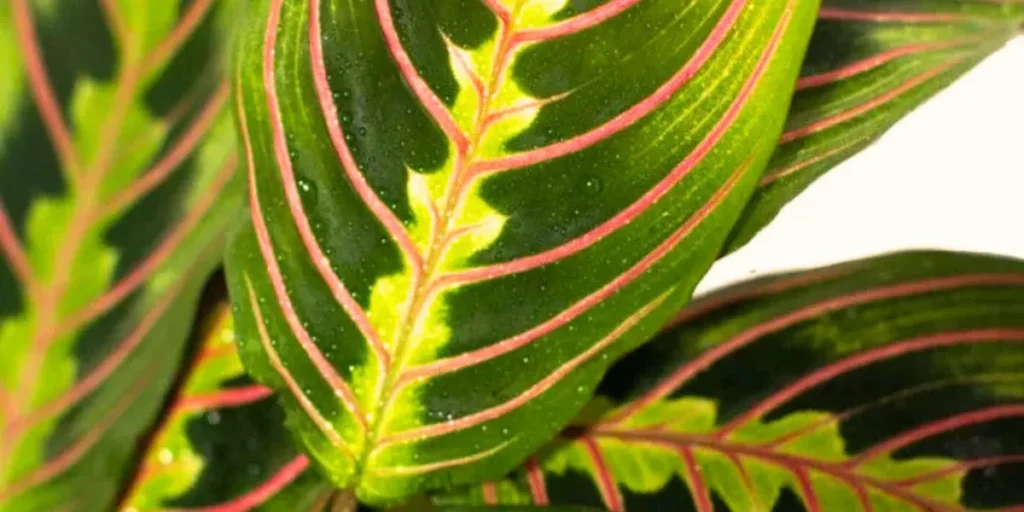
The Maranta red prayer plant is possibly the largest kind of prayer plant. This kind of praying mantis known as Maranta leuconera (red praying mantis) is characterized with the aid of the red coloration at the veins of its leaves, which creates a captivating and delightful evaluation against the green foliage. It is identified as one of the most famous plant species because of its dynamic look.
It functions as deep green leaves with shiny red veins that create assessment. The leaves also have dark green patches that resemble fishbones, adding to their visual appeal. The underside of the leaves is usually a rich maroon or purple, making the plant equally stunning from every angle.
- Unique Feature: Red veins and maroon undersides.
- Best For: Adding a pop of color to your indoor space.
2. Lemon Lime Prayer Plant
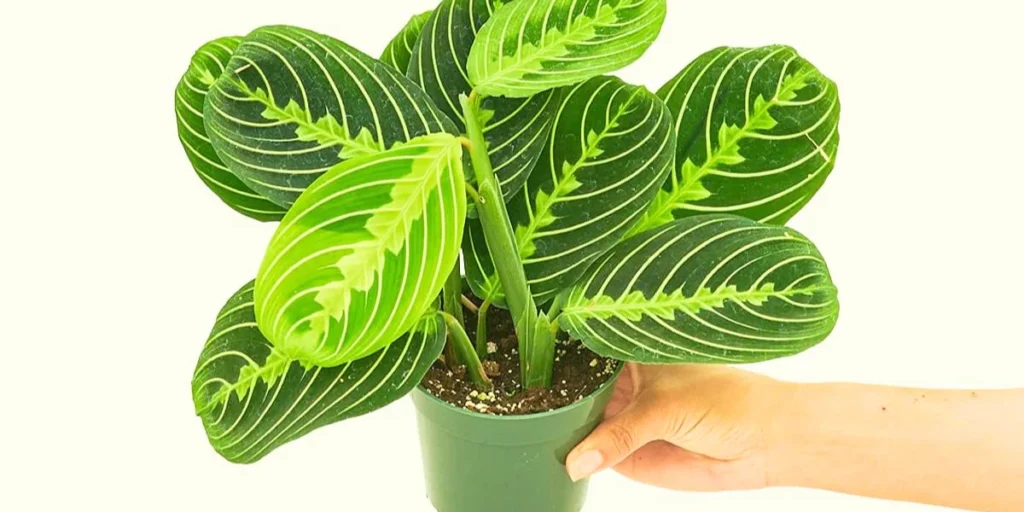
The Lemon lime prayer plant is another striking variety, characterized by its lime-green veins that run through darker green leaves. This variety is slightly less common than the red prayer plant, but it is equally beautiful. The assessment among the lime-green and darker sun shades creates a colorful display which could brighten up any room.
- Unique Feature: Lime-green stripes on dark green leaves.
- Best For: Homes with lower light, as this plant thrives in indirect sunlight.
3. Rabbit Foot Prayer Plant
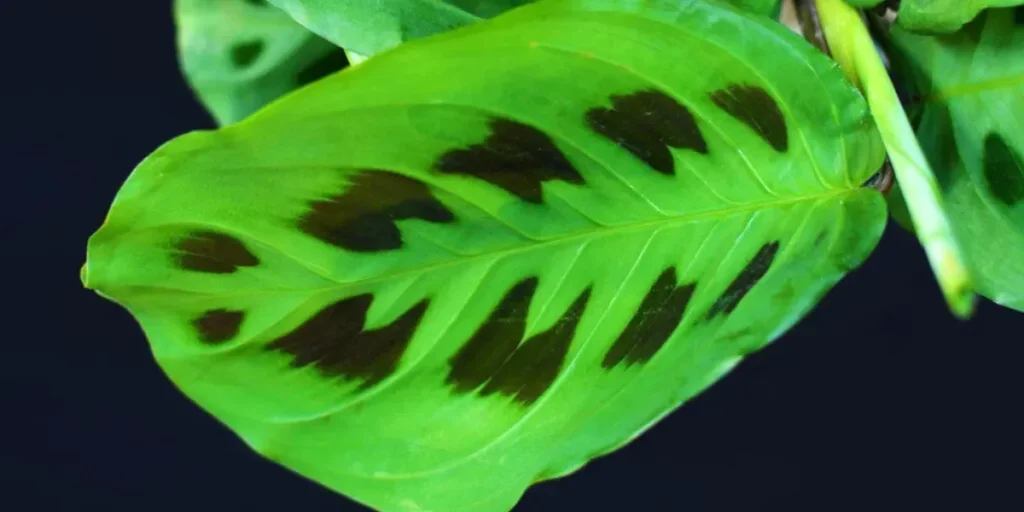
Additionally called the “green prayer plant,” this range boasts lighter green leaves with exclusive darker green spots that resemble the footprints of a rabbit. The evaluation among the sun shades of green makes it a visually attractive desire for any indoor place.
4. Black Prayer Plant
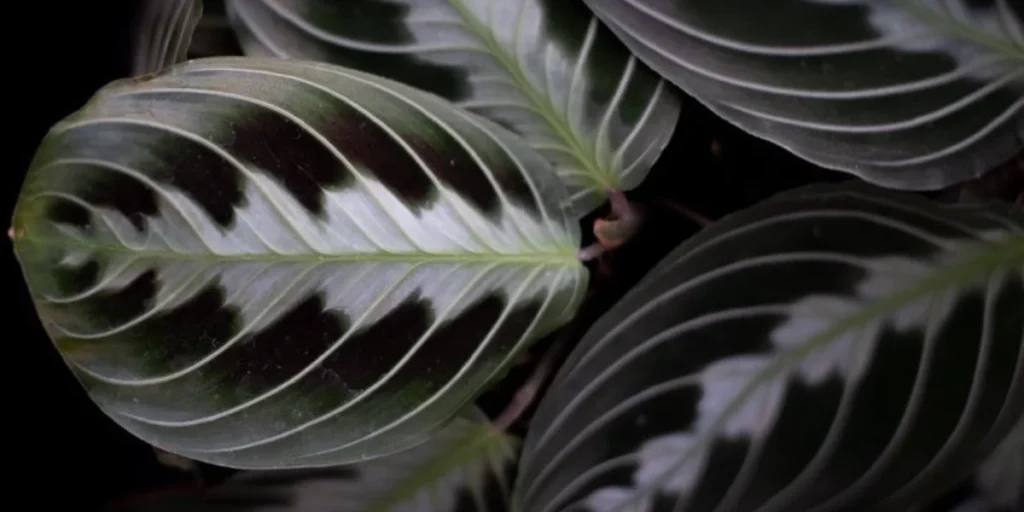
For something a little more dramatic, the black prayer plant offers velvety, dark green to blackish-purple leaves with silver stripes. It’s perfect for adding an elegant touch to your plant collection.
5. Variegated Prayer Plant
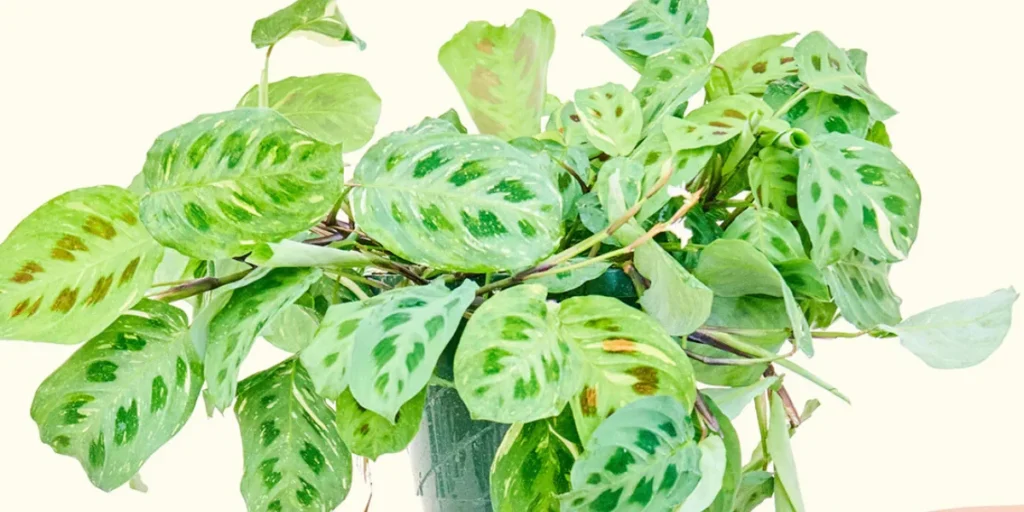
The Variegated prayer plant has leaves with variegated styles of green, cream, and occasionally red or purple. These multicolored leaves create a beautiful display that is certain to attract interest. Variegated types may be barely extra difficult to take care of, as they require extra particular light and water situations.
- Unique Feature: Multicolored, variegated leaves.
- Best For: Experienced plant parents who enjoy a challenge.
6. Fishbone Prayer Plant
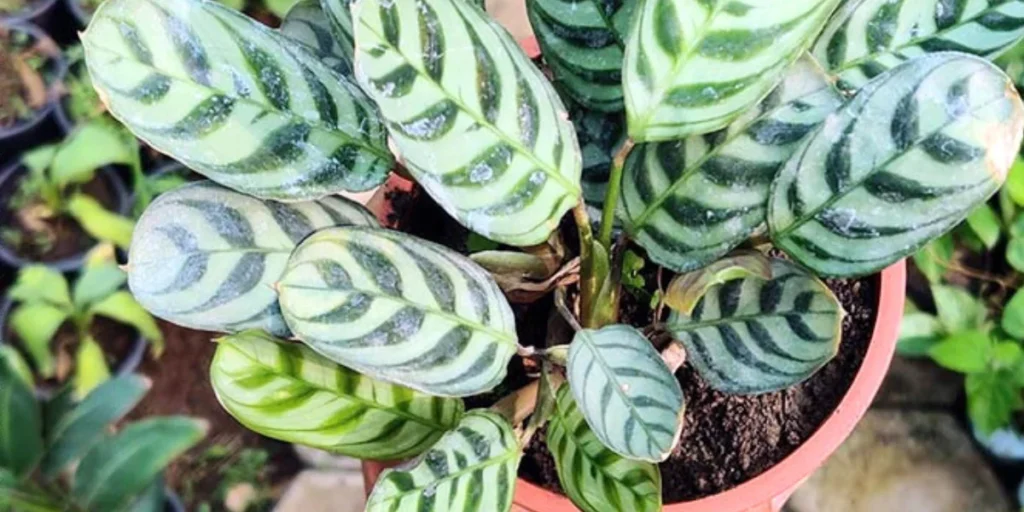
The Fishbone prayer plant is known for its precise vein pattern, which resembles the spine of a fish. The leaves are generally darkish green with lighter green veins, and the undersides are regularly a deep maroon. This range is a bit extra sensitive than others, however with the proper care, it can thrive and add a completely unique contact on your plant series.
- Unique Feature: Fishbone-like vein pattern.
- Best For: Advanced plant enthusiasts looking for something different.
7. Maranta Green Prayer Plant
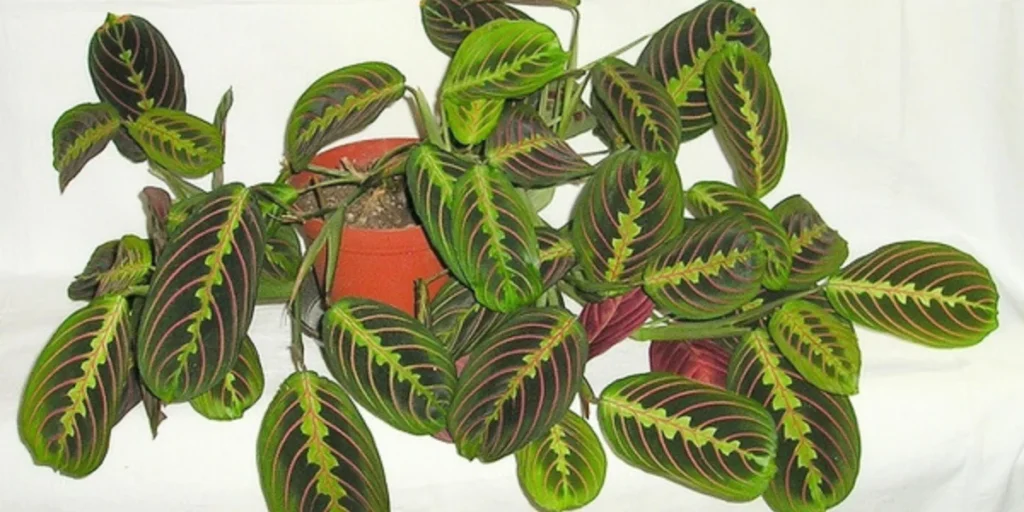
The Maranta green prayer plant is an extra understated range, with stable green leaves and sensitive light-green markings. Although no longer as flashy because the red or lemon-lime sorts, this plant is best for those who decide upon a more diffused aesthetic. It’s additionally one of the simplest types to care for, making it an amazing alternative for beginners.
- Unique Feature: Soft green leaves with light green patterns.
- Best For: Low-maintenance indoor gardening.
8. Calathea Prayer Plant
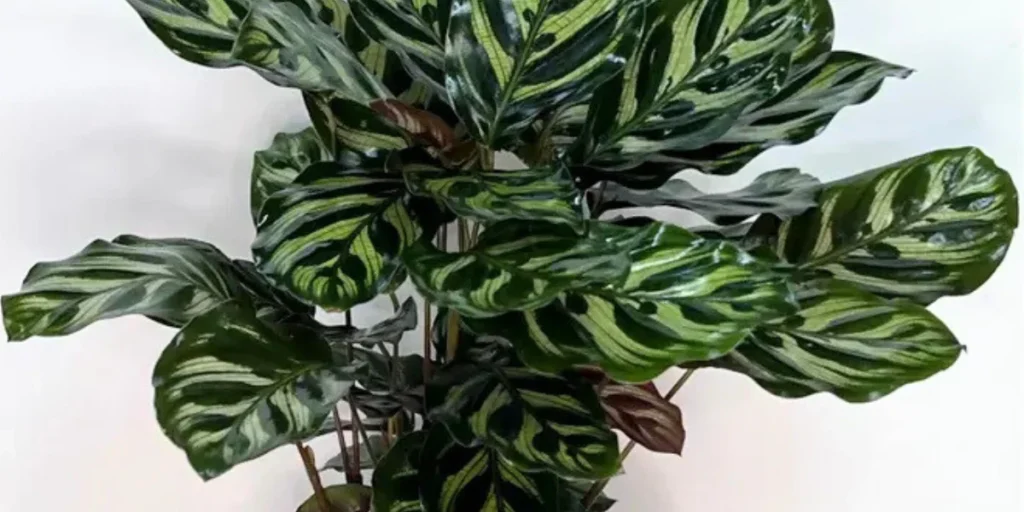
Though not technically a prayer plant, calatheas are often grouped with Maranta due to their similar behavior and appearance. Calatheas are known for their bold, colorful foliage, and their leaves also fold up at night like prayer plants. This variety is known for its rounded leaves with burnished stripes on the inside of the leaves, the bifolia prayer plant provides a tropical touch to any space. It grows optimally and with high humidity as well as light shine.
- Unique Feature: Bold, patterned leaves.
- Best For: Those looking for more variety in their indoor garden.
9. Purple Prayer Plant
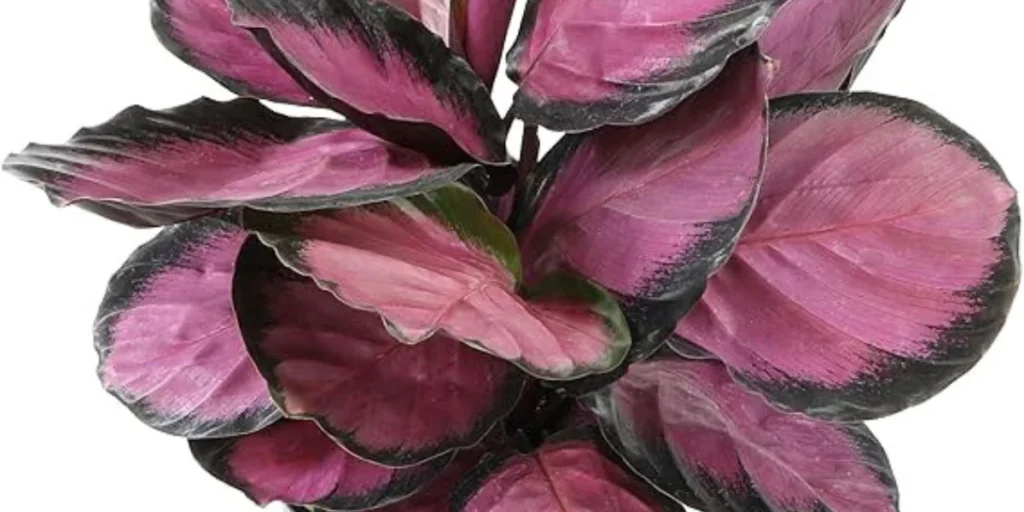
The Purple prayer plant features leaves with purplish hues and intricate patterns, often with a mixture of green and purple shades. This variety is rarer than others, but its unique coloring makes it a standout in any collection.
- Unique Feature: Rich purple hues in the foliage.
- Best For: Creating a vibrant, exotic indoor garden.
10. Pink Prayer Plant
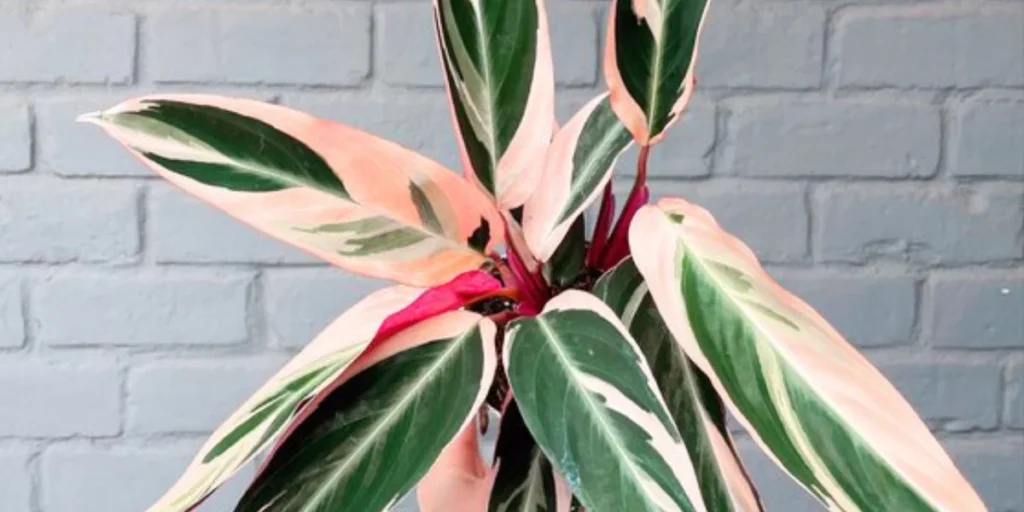
The Pink prayer plant variety is known for its suitable pink markings that run across its leaves. The delicate pink veins add a soft touch to the otherwise green foliage, making this variety a favorite for plant lovers who prefer softer tones.
- Unique Feature: Pink veins and markings.
- Best For: Homes with a softer, pastel aesthetic.
11. Ctenanthe Burle-Marxii
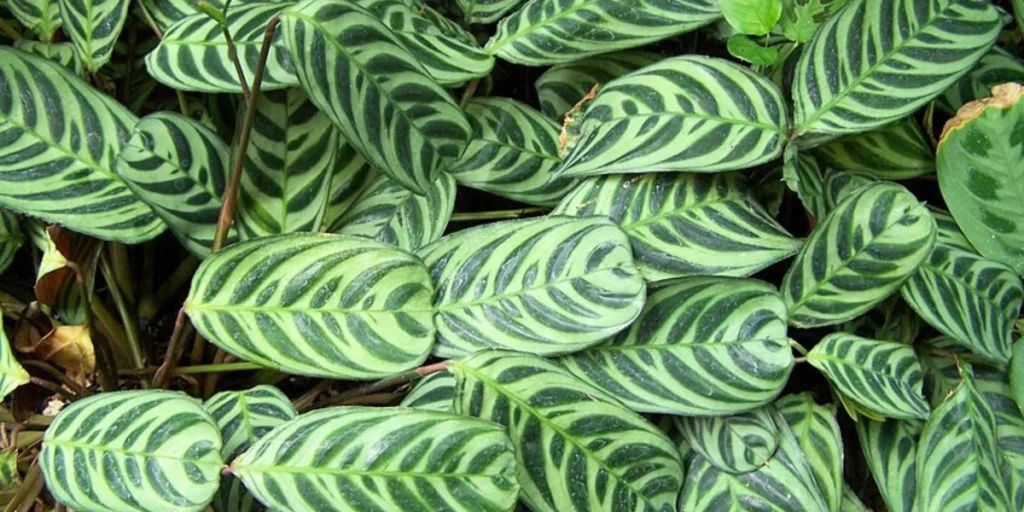
Often or occasionally fission bon is also called a prayer plant. It features narrow, elongated leaves that are distinctly recognizable. This type is most popular and known for its adaptability and flexibility.
Tips To Keep In Mind While Buying Prayer Plants
- Avoid plants with brown spots on leaves.
- Check for pests. Look underneath leaves and along the stem to make sure no critters follow you home.
- Read the plant label. Make sure that this plant works for you, your lifestyle, and your space. This one needs a lot of humidity.
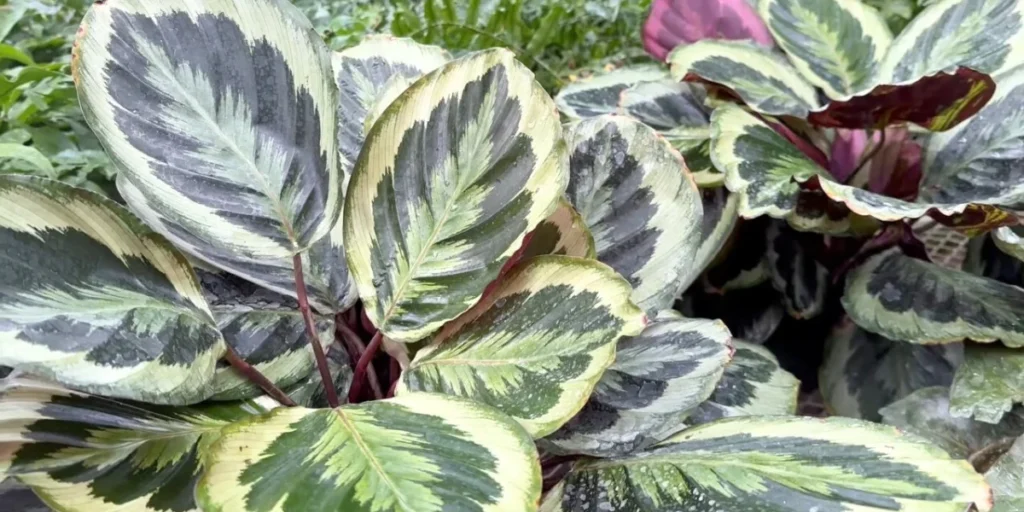
Conclusion
Prayer plants are more attractive and beautiful than other houseplants. They provide many benefits in addition to improving prosperity and mood in your home and are much easier to care for than other plants. By taking care of them and taking proper necessary orders and suggestions, one can bring and enjoy peace and enlightenment in the house. There are many types of these plants and one can get comfort and satisfaction by using any of them.
Prayer plants are beautiful, unique, and easy to care for indoor gardens. They have dramatic leaf movements and vibrant patterns, capturing attention. With proper light, humidity, and water, they can thrive for years. There are various types, including Maranta red and Lemon lime, and with proper care, they will provide fascinating movements and vibrant foliage.
People also search for Philodendron Snowdrift
FAQs
Prayer plants grow moderately fast, typically adding new leaves every few weeks during the growing season. Growth can slow down in winter when the plant is dormant.
Prayer plants can be placed outside in shaded, humid environments during warm months, but they must be brought indoors before temperatures drop below 60°F (15°C).
If your prayer plant’s leaves are not folding at night, it could be due to inadequate light exposure or inconsistent care. Ensure the plant is receiving enough indirect light and water.
Mist your prayer plant every 2-3 days to maintain humidity, especially during the dry winter months or if you live in a dry climate.
Water your prayer plant when the top inch of soil feels dry. Keep the soil consistently moist but not waterlogged.
Yes, prayer plants can bloom when grown indoors under the right conditions. Mature and happy prayer plants will display delicate white and light pinkish-purple flowers in the spring and summer. Take this as a great sign that your plant is happy with its growing conditions!
Curling leaves are a sign of low humidity or underwatering. Check your plant’s environment and water it accordingly.
Prayer plants typically grow to about 12 inches tall but can spread out over time to create a fuller appearance.
Prayer plants are relatively easy to care for, though they prefer greenhouse-like conditions, which may be hard to achieve indoors in some areas.
Yes, prayer plants can grow most successfully indoors. They require very tropical conditions which can be hard to achieve outdoors in many parts of the country.
